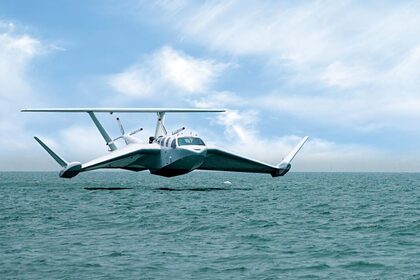On August 18, the Office of Advanced Research Projects of the US Department of Defense (DARPA) published a request to search for technologies for the development of a new unit that will focus on the creation of seaplanes and ekranoplanes. This is reported by the Defense Blog portal.
In the USA, they wanted to create a vehicle that can move over the surface of the earth or water due to interaction with the air reflected from the surface (the screen effect). The Department of Tactical Technologies DARPA confirmed the desire of the military to get a serial ekranoplan. The armed forces are attracted by the ability of ekranoplanes to move faster than ships, and a large load capacity compared to helicopters and naval aviation aircraft.
The DARPA request notes that the department is interested in developing vehicles that can eliminate the limitations of traditional air and sea cargo platforms. The concept of a promising ekranoplan provides for a payload of over 100 tons, the ability to carry several amphibians on board, and the ability to bypass obstacles using an airplane flight mode. Promising vehicles are planned to be used in search and rescue, amphibious, and logistics operations.
The screen effect was discovered in the 1920s, but only 50 years later ekranoplans became widespread. So, in the USSR, in 1972, the world's first transport ekranoplane "Orlyonok" was launched, and in 1986, the world's first ekranoplane-rocket carrier "Lun"appeared. Until the early 1990s, experiments with ekranoplanes continued in the USSR, but after the collapse of the USSR, work stopped. In 2011, the Russian Defense Ministry reported on the rejection of dynamic hovercraft.
Leonid Nemov

